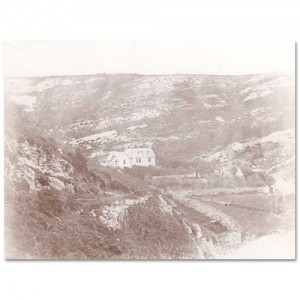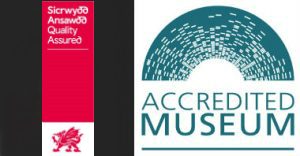 John Dillwyn Llewelyn and his wife, Emma, built this holiday home and named it Caswell Cottage. A ‘cottage’ in name only, its proportions were more those of a small mansion.
John Dillwyn Llewelyn and his wife, Emma, built this holiday home and named it Caswell Cottage. A ‘cottage’ in name only, its proportions were more those of a small mansion.
Holidays spent at the cottage gave JDL a proximity to the coast which allowed him to pursue experiments with photographs of the sea and rock formations (which were of interest to his friend, Hugh Falconer, a leading palaeontologist).
JDL was convinced that under ‘favourable circumstances’ on the sea coast ‘splendid pictures could be obtained.’ After viewing John Dillwyn Llewelyn’s work at an exhibition in 1854, Prince Albert requested two of the views taken at Caswell.
c.1850

